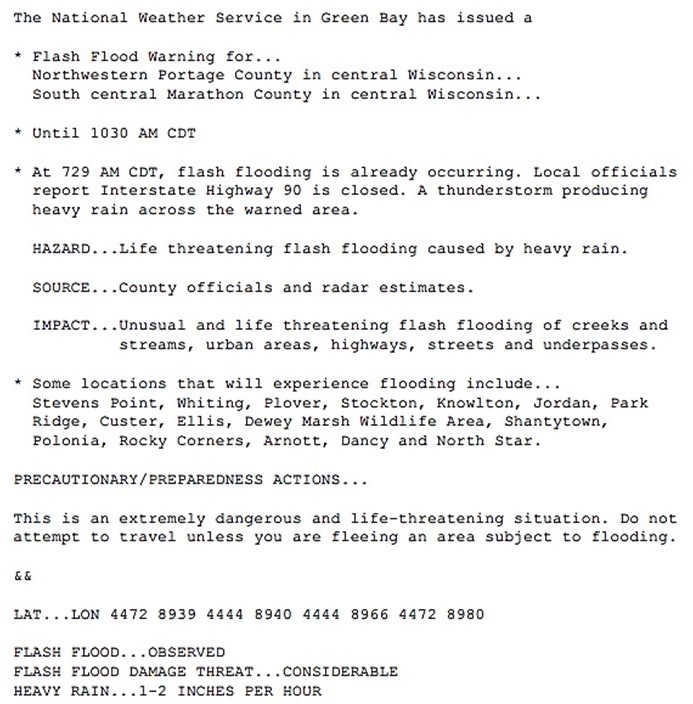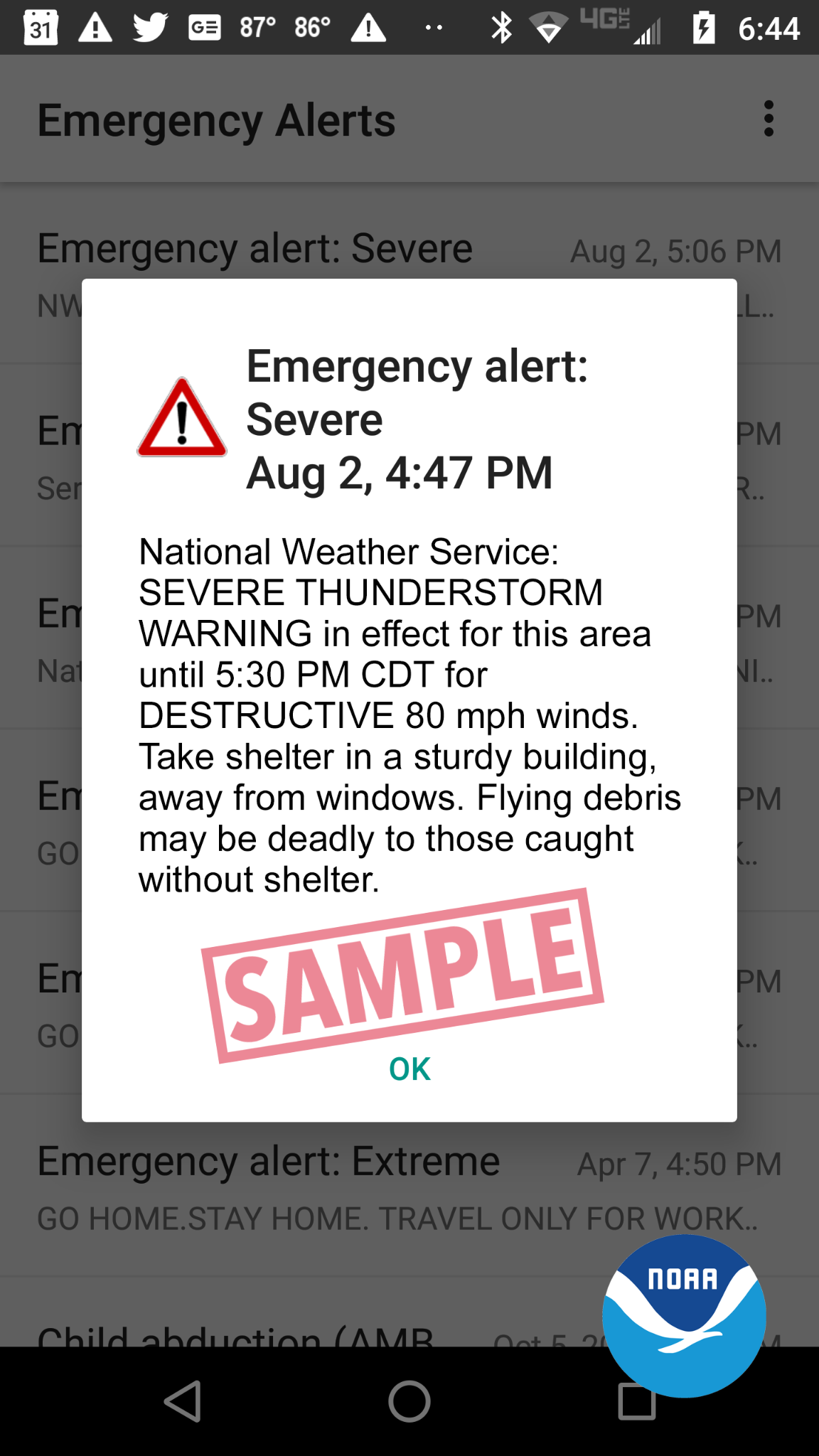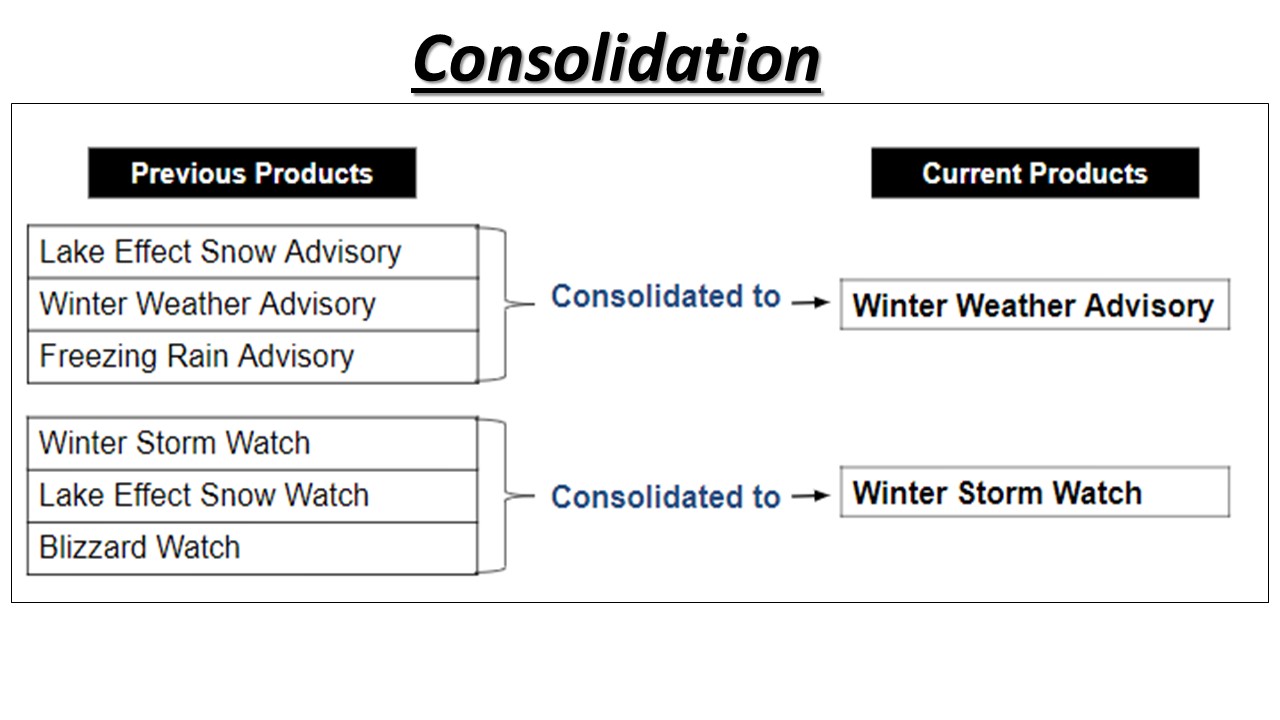
In the early stages of Haz Simp social science research and engagement, we received consistent positive feedback for reducing the number of products (consolidation) and simplifying the product text (reformatting). As a result, NWS has made and continues to make important improvements to the current Watch, Warning, and Advisory (WWA) messaging system.

Most NWS long-duration products (temperature, visibility, wind, and marine hazards) have now joined the winter weather suite and adopted the “What, Where, When, Impacts” bulleted format. For more information, see the Non-Precipitation Weather hazards fact sheet (English, Spanish) and Marine hazard fact sheet (English, Spanish). Our flood products will also soon transition to this bulleted format; stay tuned for updates!
While short-duration products (Severe Thunderstorm Warning, Tornado Warning) also use a bulleted format, the language is different - they are in an Impact-Based Warning (IBW) format with “Hazard, Source, Location” bullets. Aligning with this, NWS implemented this same format for Flash Flood Warnings.
 NWS is also exploring ways to highlight particularly extreme or severe events. For instance, the above change to IBW format for Flash Flood Warnings also includes machine-readable tags that allow NWS to issue Wireless Emergency Alerts (WEA) for those warnings with "Considerable" or "Catastrophic" tags. An example is shown to the right. For more information on this change, please take a look at the IBW fact sheet.
NWS is also exploring ways to highlight particularly extreme or severe events. For instance, the above change to IBW format for Flash Flood Warnings also includes machine-readable tags that allow NWS to issue Wireless Emergency Alerts (WEA) for those warnings with "Considerable" or "Catastrophic" tags. An example is shown to the right. For more information on this change, please take a look at the IBW fact sheet.
A similar process is now in place for severe thunderstorms. As of July 28, 2021, NWS can now better convey the severity and potential impacts from thunderstorm winds and hail by adding a “damage threat” tag to Severe Thunderstorm Warnings. The three categories used, in order of highest to lowest damage threat, are destructive, considerable, and base." An example can be found to the right. For more information, you can view this service change notice.
NWS continues to consolidate other marine, temperature, and flood products as well (see graphics below for more details). Effective and scheduled dates are as follows:
Flood Changes: Implemented in November 2021 (Fact sheet)
Marine Changes: Implemented in December 2019
Temperature Changes: Extreme Cold consolidation implemented in October 2024 (Cold Fact Sheet)
Extreme Heat renaming implemented in March 2025 (Heat Fact sheet)
.JPG)
.jpg)
On Oct. 2, 2017, NWS reformatted all Winter products into a new bulleted format (What, Where, When in red text below) and consolidated Winter Watch and Advisory headlines (as shown below).

.jpg)